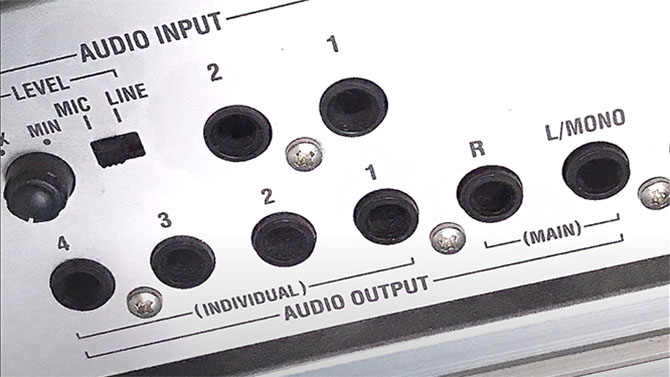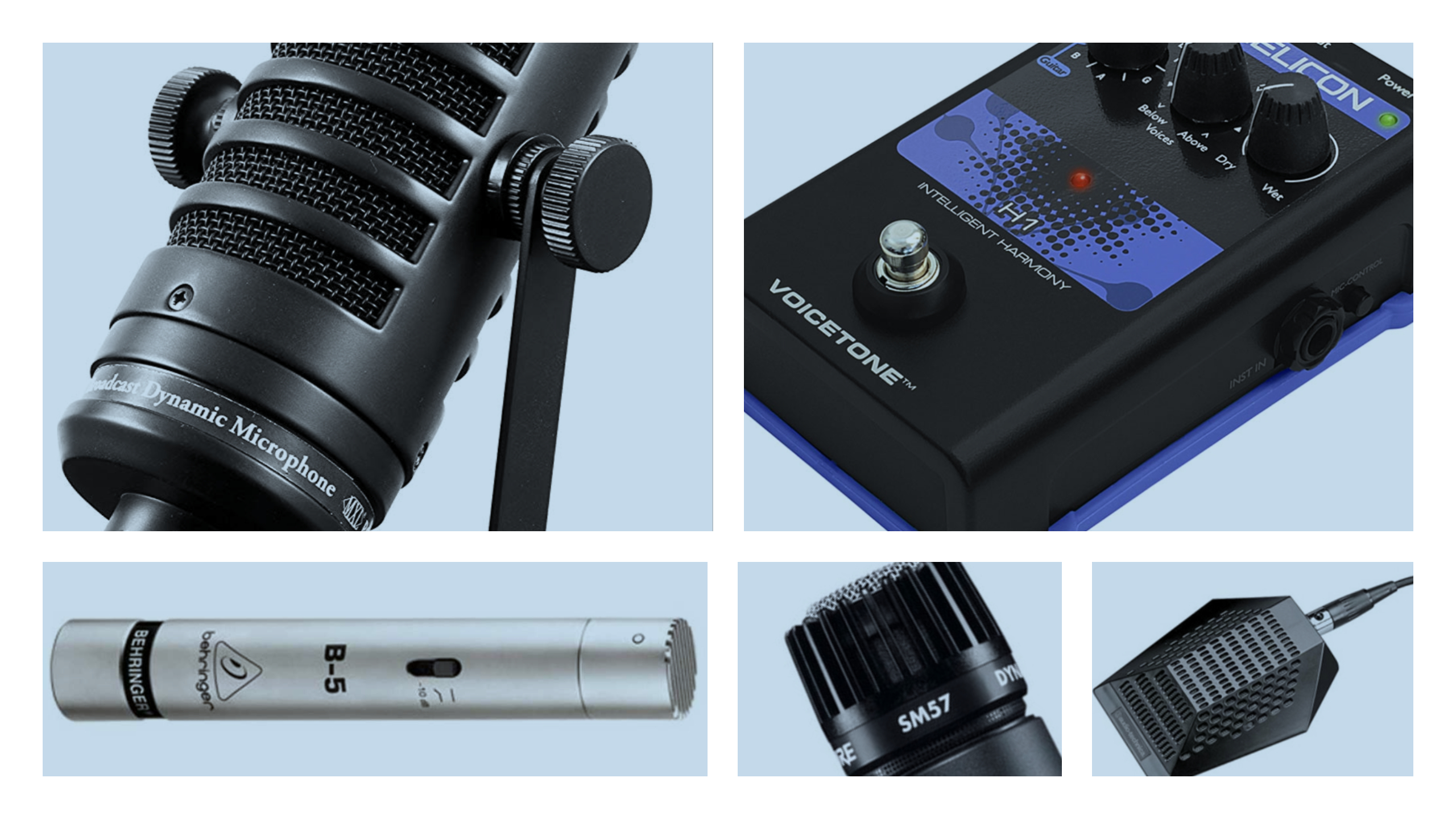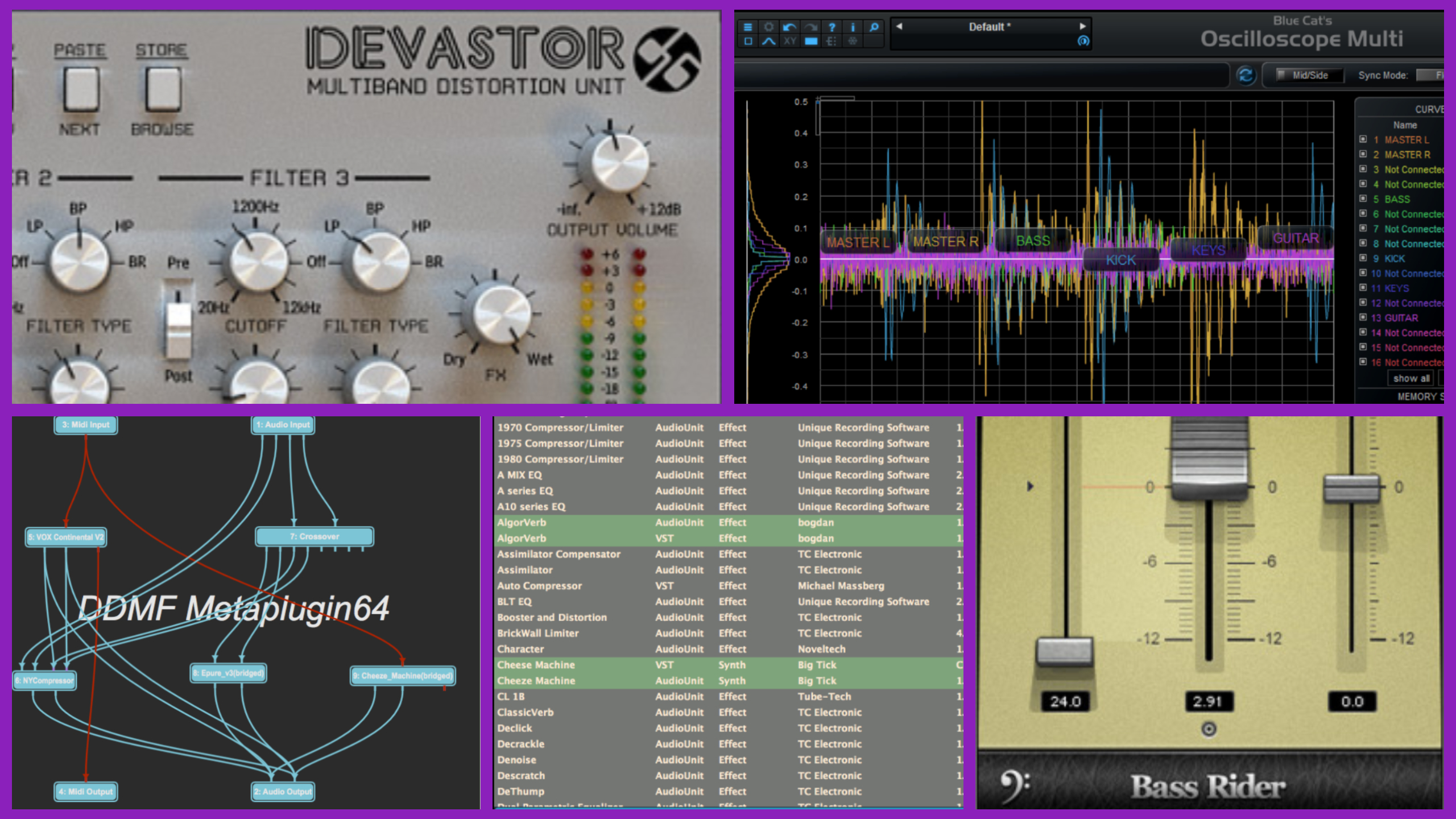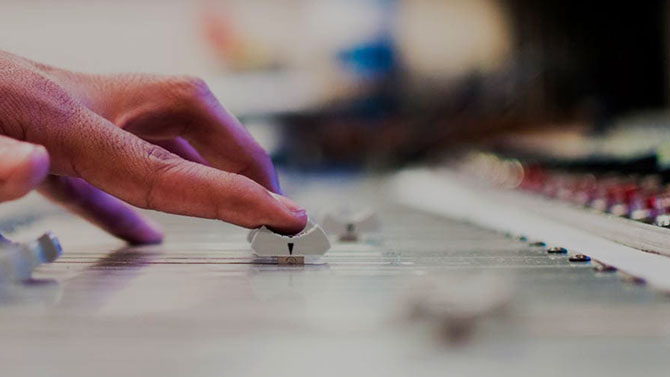Whether a hardware signal processor Definition:
Definition:
A device or software program that modifies some aspect of audio or video. With audio, the term is used interchangeably with signal processor, although some use the term "effect" to describe a type of signal processor that creates an obvious change to a sound, i.e., more of a special effect. (Fig. 1), software plug-in Definition:
Definition:
A software module, typically for signal processing or analysis, that inserts into the signal path of a DAW or video editor, or in some digital consoles. Also Plugin., or even a software emulation Definition:
Definition:
To imitate the characteristics of something else. Example: Running a Windows emulation on a non-Windows computer would allow it to run Windows software, although perhaps with a performance penalty. of a hardware processor Definition:
Definition:
A device that modifies signals. In audio, this typically affect dynamics, frequency response, harmonics, or time. In video, processors typically affect color, intensity, and special effects., dynamics Definition:
Definition:
In a musical performance, changes in overall volume levels, often accompanied by timbral changes. Example: Classical symphonic music has a wide dynamic range, while dance mixes have a much narrower dynamic range. control touches almost all aspects of audio—recording, live Definition:
Definition:
Live broadcast of an event or program without substantial delay or editing. sound, broadcast, worship sound, you name it. And of all the dynamics processors, compressors and limiters are the most common.

At first glance, they may seem to have similar functionality. But let’s dig deeper, and make sure we know how to choose the right tool for the right job.
Compressor/Limiter Background
Both compressors and limiters reduce a signal’s dynamic range Definition:
Definition:
1. Range in dB between a device's noise floor and its maximum available headroom. 2. The difference between the maximum and minimum volume levels that occur in a musical performance.. This had its genesis in the peak Definition:
Definition:
A signal's maximum level at any point in time. limiters used for broadcasting back in the 1930s, when overmodulating a transmitter Definition:
Definition:
Any device that sends an electrical signal, typically radio waves or by wire. could at the very least cause distortion Definition:
Definition:
A change in an electronic or acoustic signal's waveform. This can undesirable if it impacts signal quality, or desirable when used for creative signal processing., and at worst, equipment damage. But dynamics control also became important for shoehorning music’s wide dynamic range into the inherently limited dynamic range of consumer music playback systems. Dynamics control could restrict dynamic range by making levels soft enough not to overload Definition:
Definition:
Causing a device to exceed its capability, usually undesirable but used for an "overdrive" effect in music. Also called "blooming" in classic recordings. See: Overdrive. tape, or cause a phonograph Definition:
Definition:
A mechanical device for reproducing sound from a grooved cylinder or vinyl disc-shaped recording medium. needle Definition:
Definition:
(Slang) The stylus that's part of a phonograph cartridge. to jump out of its groove—but loud enough to rise above tape hiss Definition:
Definition:
Random noise that is inherent in electronics-based audio equipment. or vinyl’s surface noise Definition:
Definition:
Noise caused by the stylus traveling along the imperfectly smooth groove of a phonograph record..
Now we’re in the digital Definition:
Definition:
A signal or data expressed as series of the digits 0 and 1, typically represented by values of a physical quantity such as voltage or magnetic polarization. age, and 24-bit digital audio recording offers a dynamic range that greatly exceeds vinyl, tape, and even the CD’s 16-bit dynamic range (which nonetheless is more than enough for excellent audio fidelity). Thanks to high-quality input and output electronics, we can record very high and low levels. Yet dynamics processing continues to play an important role in the studio for many reasons, both utilitarian and creative.
How They Work
Both compressors and limiters depend on drawing an audio “line in the sand,” called the threshold Definition:
Definition:
The level above or below which a signal triggers a processor's effect.. Signals below the threshold remain relatively untouched, while signals above the threshold are processed. However, limiters and compressors do so differently.
Like a governor on a motor, a limiter Definition:
Definition:
A form of compressor with a ratio of infinity:1 above the threshold for both overload protection, or as a sound effect to normalize volume. Some engineers consider a compressor with a ratio of 20:1 or higher above the threshold for a limiter. treats the threshold as the absolute highest level a signal peak can attain. It attenuates levels above the threshold by applying gain Definition:
Definition:
The amount of amplification provided by an amplifier circuit, expressed in dB or numerically as in "3X" = "3 times". reduction to bring them below the threshold. A limiter’s gain reduction meter shows how much attenuation is being applied at any given moment to keep the audio under the threshold.
Although limiters are remarkably effective, there are two potential problems. The first is if a signal is so far above the threshold that it requires massive amounts of attenuation. This can alter the waveform Definition:
Definition:
A graphic picture of a wave. drastically enough to create distortion. The second is the speed of the attack Definition:
Definition:
The time it takes for a signal to reach maximum amplitude. This timing controls the response of dynamics processors such as compressors and limiters, and a variety of music synthesizer modules.. Ideally, the limiter should be able to attenuate Definition:
Definition:
Reduction of energy for electrical, optical, and acoustic signals. a signal immediately upon sensing that it’s gone above the threshold—but that means the signal has already gone above the threshold because the limiter had to sense that condition existed before it could start introducing attenuation.
Fortunately, there’s a solution called look ahead Definition:
Definition:
A feature of a dynamics processor to detect an incoming signal before processing for quicker reactions. See also: Feed-Forward.. This delays the audio entering the limiter very slightly, like 2 milliseconds or so. However, the circuitry analyzing the levels works in real-time. When it detects a peak, it can give the limiter a 2 ms warning that a peak is about to happen, so the limiter can “look ahead” and be ready to start attenuating coincident with the peak’s beginning—not somewhat afterward.
Unlike a limiter, instead of clamping a signal to the threshold, a compressor Definition:
Definition:
A device that reduces dynamic range by a certain ratio, and used primarily for audio signals. reduces level progressively when a signal exceeds the threshold (Fig. 2). Suppose the threshold is -10 dB Definition:
Definition:
1. A deciBel is a logarithmic ratio between two quantities, and is a nonlinear measurement that mimics human perception. 2. A unit expressing sound levels relative to a nominal level just audible by the average human ear, and equal to 1/10th of a Bel. 3. (slang) Database.. Signals up to -10 dB are unaffected; however, as the input increases above -10 dB, the output increases by a lesser amount. How much less depends upon the compressor’s compression Definition:
Definition:
1. Reducing the dynamic range of an audio or video signal for consistency, to keep it from exceeding the available headroom, or providing a special effect. 2. With data, using a process to reduce the amount of data. Compression can be lossless, where decompressing replicates the original signal, or lossy, where compression occurs by judging some data as unnecessary, and can therefore be discarded from the file. ratio. For example, with a 2:1 Definition:
Definition:
Stereo sound with 2 speakers plus 1 subwoofer. compression ratio Definition:
Definition:
The ratio in change from input level to output level in a compressor., a 2 dB increase in the input level creates only a 1 dB increase at the output. With an 8:1 compression ratio, a 16 dB increase in the input level creates only a 2 dB increase in the output level.
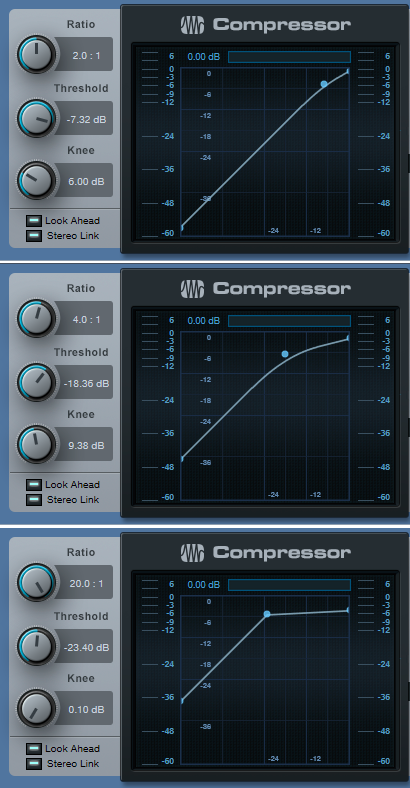
Some people consider a compression ratio over 20:1 as essentially the same as limiting, and will call a compressor that can do 20:1 compression a “compressor/limiter.” This can be a source of endless debate on internet forums, but the reality is that the audio industry has no language police—so there’s no definitive answer on whether a 20:1 compression can be called limiting, or whether the ratio has to be ∞:1. Does it matter? Not really...what matters is whether you’re getting the sound you want, and not overloading stages you don’t want to overload.
Attack and Release
The above is just the basics, because there are other factors at play. For example, you might not want a compressor to clamp down instantly on strong attacks, because they’re part of the sound you want to reproduce. It’s common to leave some attack time (the time interval between when a signal exceeds the threshold, and when gain reduction starts occurring) with vocals, because that lets through more of the consonant sound at the beginning of phrases, which makes the overall effect Definition:
Definition:
A device or software program that modifies some aspect of audio or video. With audio, the term is used interchangeably with signal processor. more intelligible. You also might not want to eliminate a percussion instrument’s attack, which would rob it of its power...but you do want what follows the attack to be compressed. Again, this is another reason to add some attack time.
Generally, you want a limiter to respond rapidly, but both compressors and limiters also have controls for their release time—how long it takes for the gain reduction action to stop once the input signal passes below the threshold. If the gain reduction transitions in and out of acting too rapidly, the sound can become “choppy” as the level see-saws around the threshold. A longer release gives a smoother action; but if it’s too long, then signals below the threshold will still be at a reduced level, and sound softer than they should.
As a result, many compressors provide the option of automatic control over attack and/or release times, based on the incoming program material. For typical situations this is optimum, although in some cases, manual adjustment is necessary—for example with a highly percussive sound, you might want to pull the release time Definition:
Definition:
With a dynamics processor, once the input signal drops below the threshold, the release time sets how long it takes for the dynamics processing action to stop. back a bit.
Attack and release characteristics are important in shaping the overall sound. Different compressors use different electronic components to control the gain, and each can have subtle differences in how they shape the sound, due to the varied ways they respond to attack and release characteristics. One classic example, the LA-2A compressor/limiter, has been used with vocals on countless hit recordings. Many attribute its characteristic sound to the use of optical gain control elements that tailor the attack and release times in a unique, non-linear way.
The Importance of the Knee
This feature is associated mostly with compressors but can involve limiters as well. A hard knee Definition:
Definition:
Abrupt onset of gain reduction in a compressor or limiter. lets the threshold exert dictatorial control over the level where the signal will be processed, but a soft knee Definition:
Definition:
Gradual onset of gain reduction in a compressor or limiter. See Knee. See Hard Knee. loosens up this parameter a bit. With a soft knee, the compression ratio starts to increase with input levels below the threshold, and increases as it passes over the threshold, until it eventually settles into the final compression ratio. This gives a smooth compression action that is particularly well-suited to vocals, because it doesn’t underscore when the voice goes in and out of being compressed. However, if you want to compress an instrument like guitar to make it sustain, then you’ll probably use a hard knee to squeeze out every ounce of sustain as soon as the guitar’s signal passes over the threshold.
Makeup Gain
The very nature of dynamics control means there’s less output than there is input, so compressors have gain controls to compensate for the lower output level. Limiters that clamp signals to 0 don’t need makeup gain per se, but if there’s an adjustable threshold or “ceiling” control, you’ll probably have a makeup gain control to bring up the output level.
Parallel Compression
This used to be something you had to patch together yourself in conjunction with a mixer Definition:
Definition:
Combiner, controller, and router for multiple audio or video signals., but modern hardware and software compressors often include a mix control to provide a balance Definition:
Definition:
The ratio of a stereo signal's left channel to its right channel, often controlled with a knob on a mixer. of compressed and uncompressed sound. Thus, you can mix in some of the uncompressed peaks to retain a sense of dynamics, even if the compressed sound is heavily compressed.
Applications
How much dynamics processing to use is controversial. With master recordings, many listeners think “louder is better,” so pop music recordings often have a super-compressed dynamic range (sometimes to the point of destroying dynamics altogether). For DJs, compressed dance music minimizes level variations, thus giving the DJ Definition:
Definition:
DJ (Disk Jockey): 1. Traditionally applied to people who played recorded music on the radio or at events. 2. Artists who perform using any combination of pre-recorded music, samples, turntables, and musical instruments. more consistent levels when crossfading and working the faders. Classical and jazz recordings use little or no dynamics processing. How much compression or limiting to use on master recordings is starting to become more defined because of loudness Definition:
Definition:
1. An audio signal's perceived volume. 2. The quantifying of the ear's non-linear frequency response versus volume. See: Fletcher-Munson curve. standards for broadcast and streaming Definition:
Definition:
A method of sending a continuous flow of digital content over IP (Internet Protocol) networks, and often, tailors itself to the user's receiving capability. promulgated by the European Broadcast Union, but we’re still in a transitional phase.
As to individual instruments..anything goes! If it sounds good, do it. But here are a few common applications.
Limiting’s most common use is to prevent overloading or clipping Definition:
Definition:
Distortion caused by overdriving a signal through an electronic device, to a level beyond which no more headroom is available. a subsequent stage. However, it has artistic uses too, because the threshold will tend to be higher than compression, and therefore processes less of the audio. This can make for a more natural sound. For example with mixed drums, limiting can reduce peaks somewhat to allow for a higher average level, thus emphasizing room sound while still maintaining “punch.” If a vocalist has poor mic technique, a limiter can prevent sudden peaks from ruining a take.
Compression is common with bass because those low frequencies need all the help they can get to be heard, given that both the human ear and playback systems tend to be deficient in low-frequency response Definition:
Definition:
The range of frequencies that an audio, video or data device can pass.. Compressing the bass gives a smoother sound, with a more consistent level among notes. This can also help compensate for a player who lacks excellent “touch.” With acoustic rhythm guitars that need to sit in the background, compression can tame the peaks while bringing up the body sound. Vocalists often favor compression because it provides a more focused, yet intimate, sound that’s consistent enough in level to be heard over the background tracks. Sometimes engineers will add a slight amount of compression to a mixer’s master bus Definition:
Definition:
1. In audio, a common point that combines multiple signals, as in a "mix bus." 2. In computers, a path that interconnects various elements for transferring data among those elements. to help “glue” the tracks together—or take it a step further, and put two compressors in series, with each set for a low compression ratio and high threshold. This can give a more transparent sound than trying to obtain the same effect from a single compressor. There’s even a hardware compressor, FMR Audio’s RNC1773, with a “Super Nice” button that puts three compressors in series for transparent signal leveling that makes it sound like the compressor isn’t there—even though you can see that gain reduction is occurring.
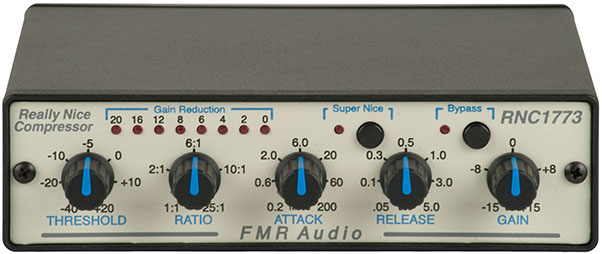
Those are just some of the potential applications for creative dynamics control. The most important aspect of using dynamics processors is to learn how different parameters affect the sound—experiment with changing settings with playing back a variety of material through the compressor or limiter, and listen carefully. That’s the way to master dynamics control, because you’ll be judging the results with your ears, and finding out which settings produce the kind of effect you want.









